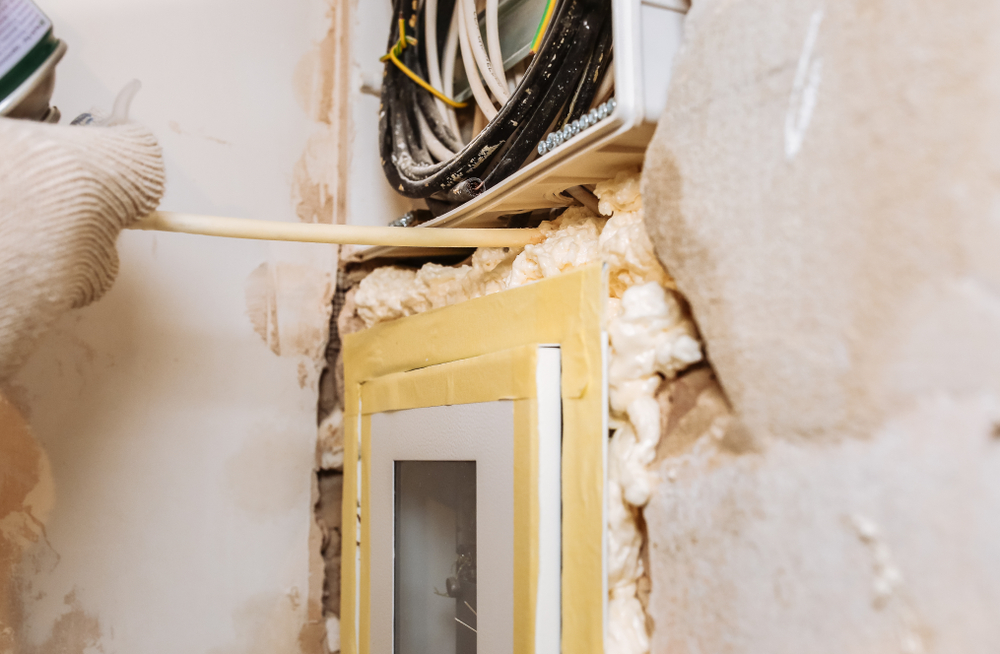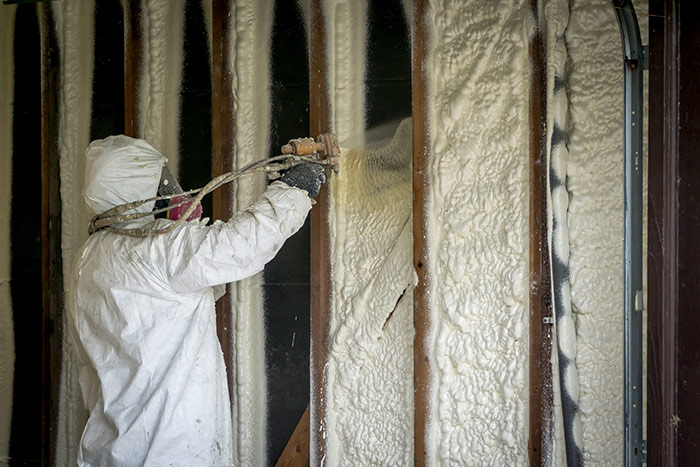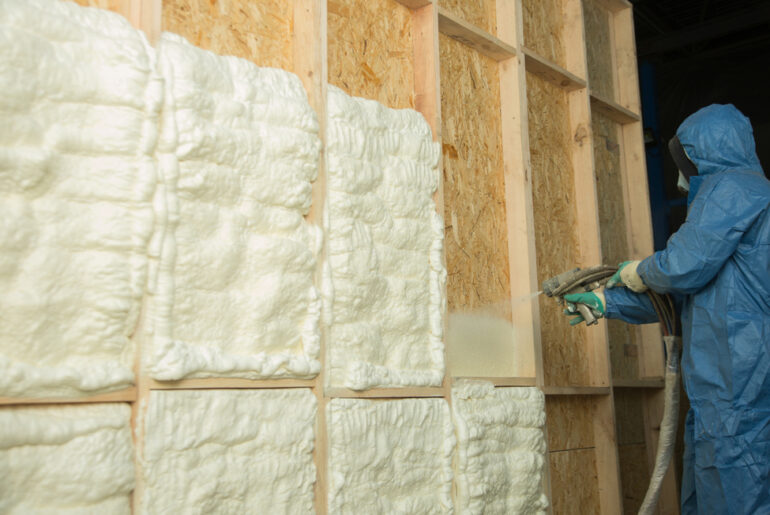Spray foam is among the most versatile insulation materials available, but that doesn’t mean it can be used everywhere. Therefore, it’s essential to know whether it’s safe to use spray foam insulation in different places around the home.
Yes, you can use spray foam to insulate around electrical wiring. But there are some things you need to keep in mind to do it safely, such as being mindful of not cutting through the wiring, using open-cell foam of the lowest expansion value, and finishing wiring before insulation if building a new house.
In this guide, we’ll go over everything you need to know about insulating around electrical wiring with spray foam.
Can You Use Spray Foam Around Electrical Wires?
You can use spray foam in any area with a potential for air leakage, but you should avoid spraying it directly on electrical wires. The foam can act as an insulator and cause the wires to overheat.
If you must use spray foam around electrical wires, cover the wires with a thick layer of paper or plastic before spraying. It will protect the wires from the foam and prevent any potential problems.
Recommended read: Can Insulation Touch Electrical Wires? Safety Tips.
Alternatively, it’s best to do wiring before insulation if you’re building a house from scratch. The electricians have to drill holes and fish wires through the framing, so adding insulation is much easier after the wiring is in place.
If they had to do all this with insulation in place, it would present too many obstacles. For one, they might have to cut through the insulation to get to an electrical box. And if they managed to get the wires in place, the insulation would have to be patched, which is time-consuming and messy.
Another potential problem with spraying foam around electrical wires is that the foam can expand and cause the wires to loosen from their connections. It can create a fire hazard since the wires could arc and start a fire.
When choosing the spray foam insulation for areas surrounding electrical boxes, it’s best to opt for open-cell foam. Since closed-cell foam is quite sturdy, it could crush the electrical box if it were to expand and push against it.
Meanwhile, open-cell foam is relatively softer. So, you can carve out the space around an electrical box and spray foam insulation inside this space. It will provide a cushion for the electrical box. However, make sure you use an open-cell foam with the lowest expansion value.
How to Properly Spray Foam Over Electrical Wires
First, it’s crucial to ensure the spray foam insulation you’re using is compatible with the electrical wiring in your home. If it’s not, it could cause a fire. Once you’ve confirmed that the spray foam is safe to use, follow these steps:
- Remove any insulation that’s already around the electrical wiring. It could be in the way and make it challenging to apply the spray foam properly.
- Use painter’s tape to secure the wiring to the wall or ceiling to keep the wires in place while you’re working.
- Apply the spray foam according to the manufacturer’s instructions. Follow all safety precautions during this process.
- Let the foam dry completely before covering it with new insulation or putting anything else back in place.
If you’re taking the DIY route, it’s important to know about the safety risks involved with spray foam insulation. Here are some tips:
- Wear protective clothing when handling or applying spray foam insulation, including a mask, gloves, and eye protection.
- Follow the manufacturer’s instructions carefully.
- Read all warning labels before using the spray foam.
- Keep flammable materials away from the area where you’ll be working.
- Call your local fire department for more information about spray foam insulation and electrical wiring safety.
The ideal approach is to avoid applying spray foam over electrical wires in the first place. You can do this by running the wires through the insulation instead of over it. Or, contain the wires in a metal or plastic conduit before insulating around it. These methods create a barrier between the spray foam and the wiring, which helps to prevent any potential problems.
Can You Spray Foam Around Electrical Boxes?
Yes, you can use spray foam, but it MUST be around electrical boxes and not inside them. The expanding foam will pressure the electrical components and cause a fire.
You should never put insulating foam in an electrical box. Doing this can overheat wires and potentially start a fire. If you’re concerned about heat loss, seal the box with low-expanding foam sealant.
Spray foam has flammable chemicals. So, you should never use it around an active electrical circuit. The chemicals can cause a fire if there’s a spark.
Switch off the power to the area where you’re working. When applying it around electrical boxes, you can opt for a spray foam that doesn’t expand too much.
Do You Do Electrical Before Spray Foam or After?
Ideally, the rough-in electricals are done before applying the spray foam insulation. It allows for a more seamless application and gives the professionals easier access to the electrical components if any adjustments or repairs need to be made.
That being said, there are some instances where it may be necessary to do the electrical work after the foam has been applied. For example, if there are issues with the wiring or if new outlets need to be added, the electrician will have to work on the spray foam.
In these cases, a qualified electrician will be able to assess the situation and make the necessary repairs. Sometimes, you may have to install a fixture or outlet box on the outside of the foam to complete the repair.
If you’re unsure whether your electrical work should be done before or after the spray foam, it’s best to consult a professional. They will be able to assess your situation and give you the best advice for your needs.
We won’t recommend making this a DIY project unless you’re an experienced electrician and you have the proper safety equipment. Some common concerns in this regard include the following:
- Exposure to Chemicals: The chemicals in spray foam can be dangerous if you’re not adequately protected. Make sure you wear a respirator and gloves when working with spray foam insulation.
- Electrocution Risk: Since spray foam is an insulator, it can create a risk of electrocution if you’re not careful. Plus, you might be working with exposed wire.
- Connection Breakage Risk: If you accidentally break a connection while working on the electrical, it could disrupt the electricity supply in your home.
Is It Safe To Spray Foam Around Electrical Outlets?
The safety of spraying foam around electrical outlets depends on a few factors. First, you need to make sure that the power is turned off in the area where you’ll be working.
Once the power is off, you’ll need to remove the outlet covers and any other obstructions so that the foam can be evenly applied.
It’s also essential to use low-expansion foam so that it doesn’t put too much pressure on the electrical components. A professional will be able to advise you on the best type of foam to use for your project. Or you can check out our detailed guide on How to Insulate With Spray Foam Around Electrical Outlets to learn more.





